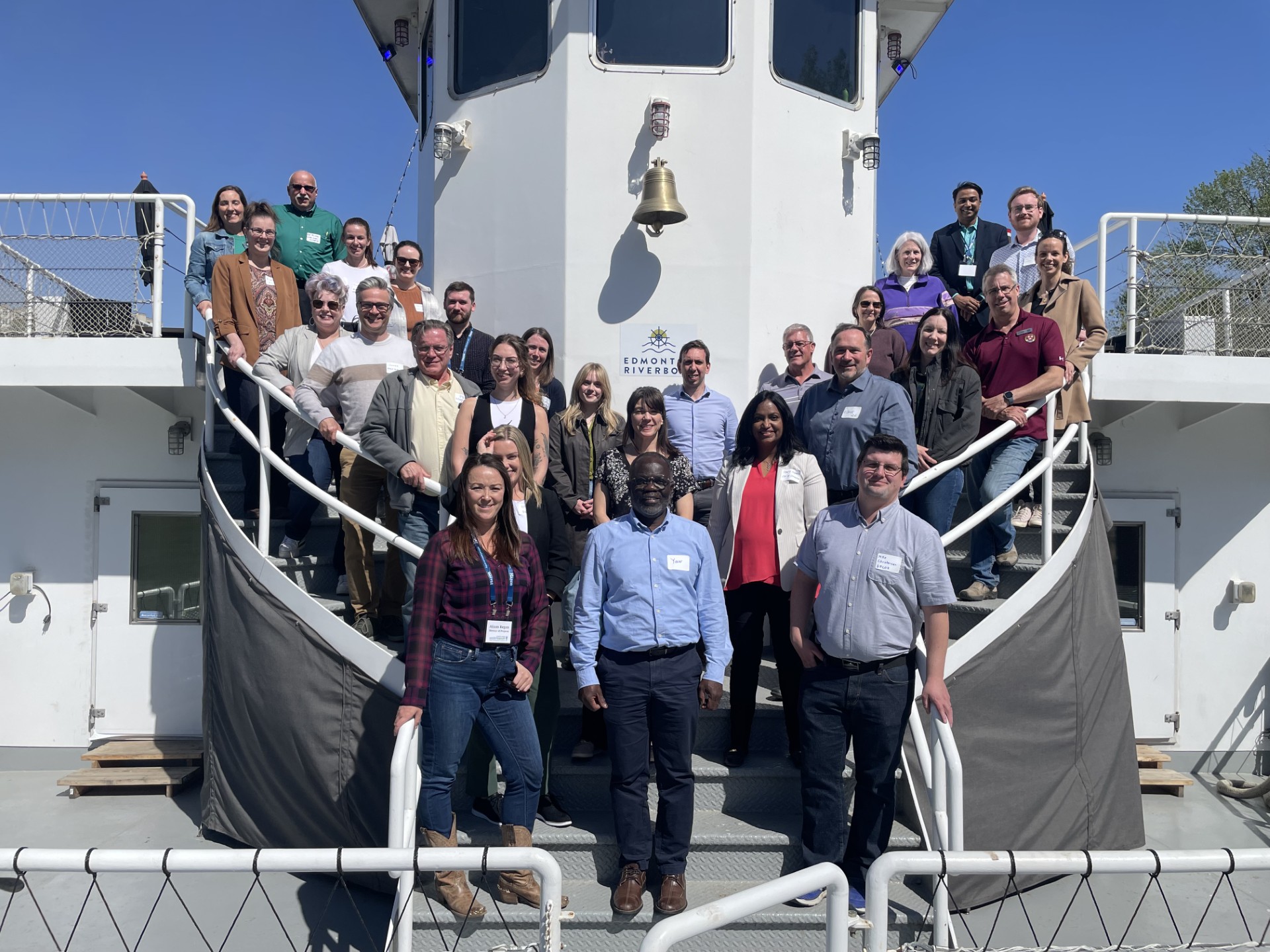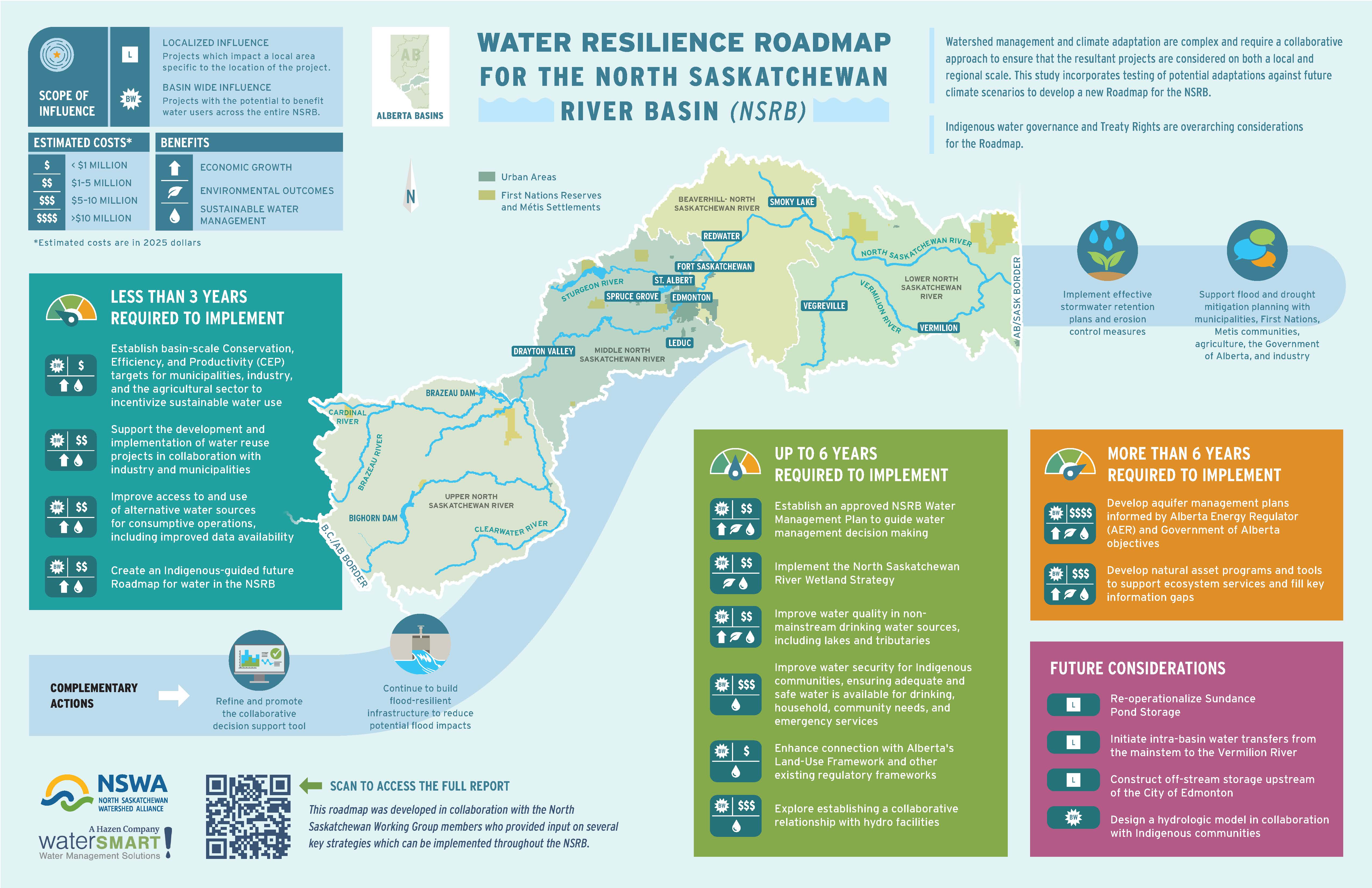The North Saskatchewan River Basin Water Management Roadmap is a collaborative initiative that explored how future water availability compares to the changing demands of major water users.
Key steps in the project included:
- Bringing together stakeholders from across the watershed.
- Developing a basin-wide model to represent hydrologic conditions and water use.
- Using the model to evaluate future water scenarios related to climate change, land use change, and shifting water demands.
- Co-designing a set of management strategies (the Roadmap) to sustain and improve water management in the basin.


